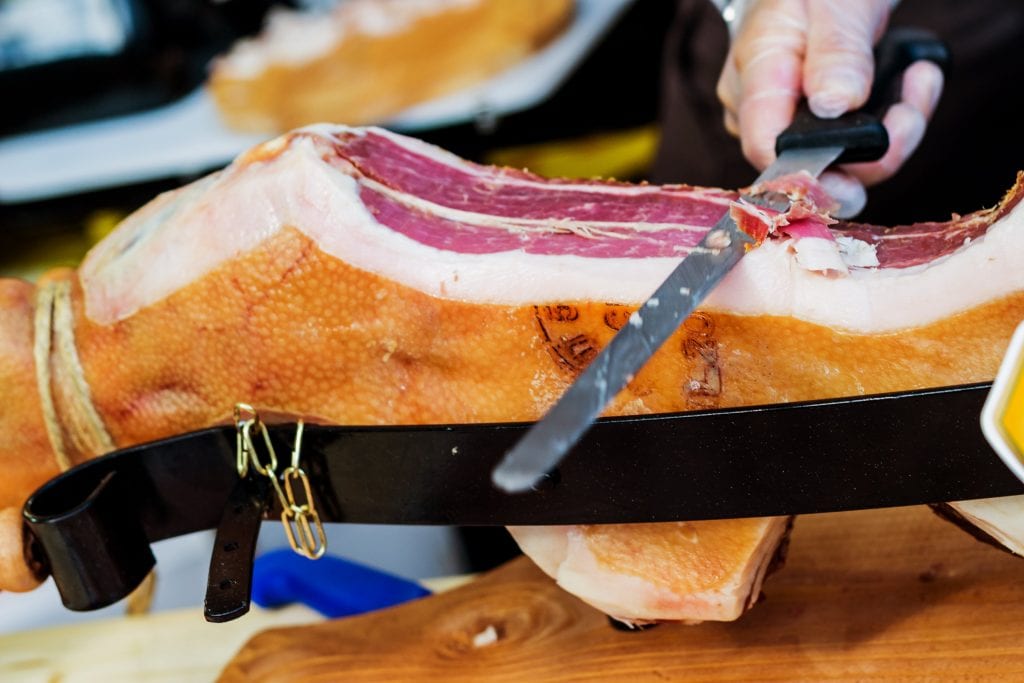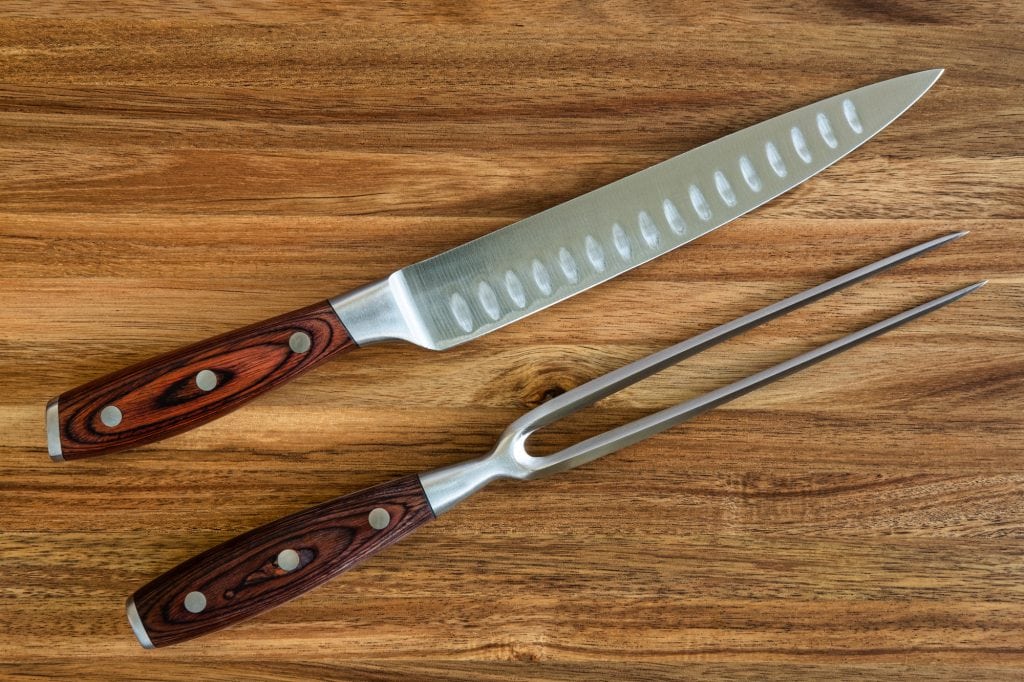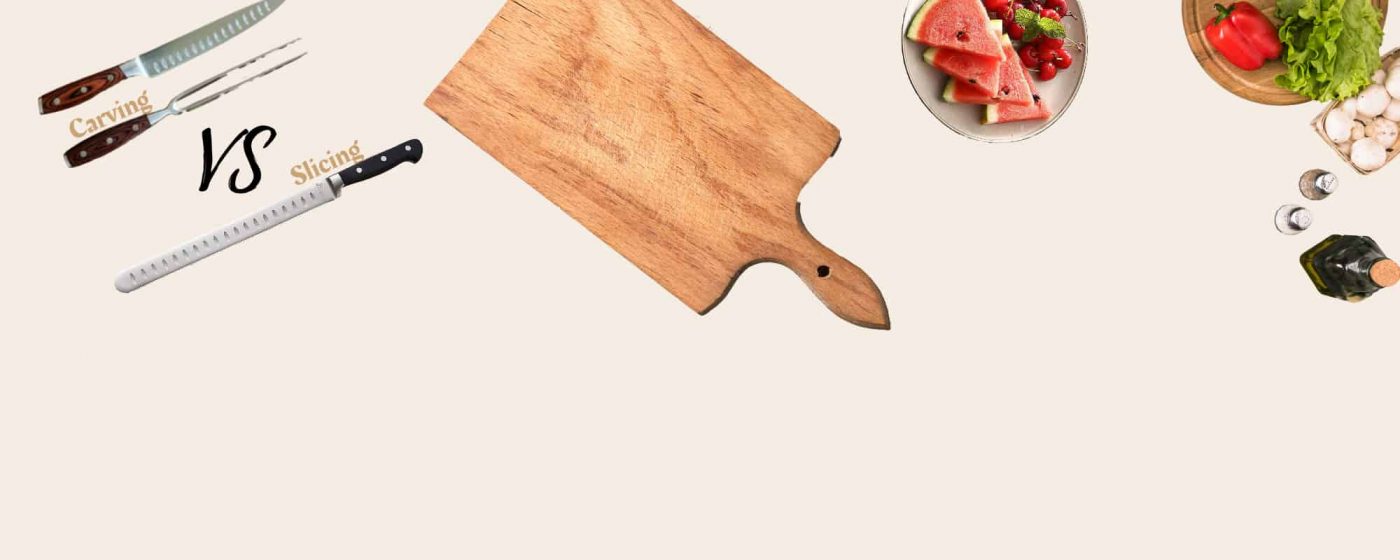When working in the kitchen, which knife will you need, a carving knife or a slicing knife? Predictably, the answer comes down to your goals in the kitchen and your preferences as a chef. In this article, we’ll be exploring the slicing knife VS carving knife question.
We’ll cover what both knives are great for, when it’s best to use something else, and how to choose which is right for you. Read on to learn all you need to know.

Carving Knife Overview
As the name suggests, carving knives are perfect for carving dense cuts of meat like roast hams, turkeys, or chicken, particularly when it’s necessary to remove cooked flesh from the bone. They’re relatively narrow, thin, and long to allow for easier slices when preparing your meals. They also usually have a sharp tip to help start your cuts.
When using a carving knife, it’s important to make sure that your blade is longer than whatever it is you’re slicing. This will make it much easier to get the right cut every time.
Carving Knife Basic Stats:
- Blades vary in length – usually 20, 25, 30, or 35 cm
- Usually between 0.35 and 0.45mm thick (thinner tends to be better)
- Have a small amount of flexibility but are fairly firm
- Between 58 and 62 on the HRC
Regular honing or sharpening is definitely recommended with this kind of knife. Carving successfully is all about presenting your meats beautifully to your family or guests.
Slicing Knife Overview
At first glance, a slicing knife doesn’t seem too different from a carving knife. They’re also quite narrow, thin, and long. A sharpened tip is often also present although this can sometimes be blunted instead.
The main differences here are thickness and flexibility. Slicing knives are thinner than carving knives, with blades that allow more ‘give’ when slicing. This makes them ideal for thinner, more delicate cuts of meat, or cooked food that doesn’t need to be disjointed from the bone. This kind of knife can also be used for preparing fruits and vegetables.

Slicing Knife Basic Stats:
- Blades between 25 and 35cm
- Blades are usually 0.30 – 0.35mm thick (thinner tends to be better)
- More flexibility for easier slices
- Between 55 and 60+1 on the HRC
As with carving knives, it’s a good idea to keep your slicing knife well-sharpened.
Slicing Knife VS Carving Knife – How They’re Different
Type of Knife | Carving Knife | Slicing Knife |
|---|---|---|
Blade Length | --- 7.9 - 13.8 inch | --- 9.9 - 13.8 inch |
Blade Thickness | --- 0.014 - 0.018 inch | --- 0.012 - 0.014 inch |
Flexibility | ||
HRC | ||
Main Purpose |
Thickness
Both slicing and carving knives have relatively thin blades, but slicing knives tend to be thinner.
Flexibility
Slicing knives offer more flexibility for thinner, more delicate slices into cooked meats and fruits.
Which One Should I Choose?
This depends entirely on your goals in the kitchen. If you know you’ll be presenting plenty of cooked poultry and other dense, roasted meats, a carving knife is a way to go.
For more general slicing of thinner meats and vegetables, a slicing knife is probably the right choice.
Carving Knife Recommendation

If you’re looking for a recommendation, our absolute favorite carving knife is the WÜSTHOF Classic 9″ Carving Knife. It offers excellent sharpness, ergonomics, and overall performance.
Click here to read our review of the best carving knives on the market in 2022.
Carving Knife Recommendation
Our recommendation for the best slicing knife out there right now is the Dalstrong 12’’ Slicing Knife – Gladiator Series. Its Granton edges, superb sharpness, and handle design are all best-in-class.
Our full review of the best slicing knives can be found here.
Final Thoughts
We hope you’ve found our slicing knife VS carving knife comparison on this page helpful. Try to remember the following:
- Carving knives are best for denser cooked meats like poultry and roasts
- Slicing knives are for thinner cuts of meat, fruit, and vegetables
For everything chef’s knives, check out the rest of the Knives Academy site.



Post Your Thoughts